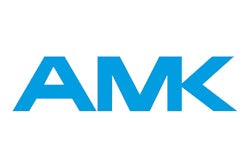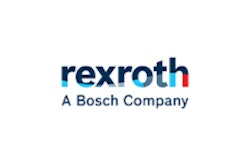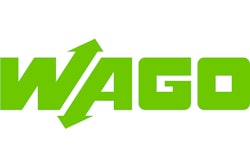Each year the editors at PMMI Media Group roam the aisles of PACK EXPO looking for the next big thing in the packaging sector. Of course, with a show this size it’s never one big thing we find but rather a multitude of things big, medium, and small, all of them innovative and meaningful in one way or another to packaging professionals of today.
This report sums up what we found in six main categories. We present them here for your review knowing full well that, inevitably, we missed a few. Probably more than a few. That’s where you come in. Let us know what we missed and we’ll look into it. Or at the very least, we’ll know to be on the lookout for it at the next PACK EXPO.
Our report comes to you from the following:
Matt Reynolds, Editor, Packaging World
Pat Reynolds, VP Editor Emeritus, Packaging World
Anne Marie Mohan, Senior Editor, Packaging World; Editor, Contract Packaging
Stephanie Neal, Senior Editor, Automation World; Editor-in-Chief, OEM
Joyce Fassl, Editor-in-Chief, ProFood World
Maya Norris, Managing Editor, ProFood World
Natalie Craig, Managing Editor, OEM
Jim Butschli, Editor, Healthcare Packaging
Keren Sookne, Director of Editorial Content, Healthcare Packaging
CONTROLS
SERVO DRIVE
Beckhoff Automation demonstrated its new AMP8000 distributed servo drive system (1) alongside its lineup of automation hardware, software, and networking solutions at PACK EXPO 2018. The AMP8000 distributed servo drive system promotes advanced motion control architectures that are cost-effective, highly efficient, and easily adjustable through dramatic reductions in electronics, mechanical hardware, and cabling.
“There are a lot of opportunities to reduce machine footprint, clean up cabling, and reduce the size of or eliminate the electrical cabinet and enclosures,” says Shane Novacek, Marketing Communications Manager, Beckhoff Automation. “We are attaching a servo drive to the back of a servo motor, which has been done before. But we are doing it in a way where the size of the motor is drastically reduced. The dimension of the motor only changes in length, there are no other changes to the housing shape or flange, which can eliminate any mechanical design changes on the machine.”
The AMP8000 has power ranges from 0.61 to 1.23 kW and standstill torque rating from 2.00 to 4.8 Nm at an F4 flange size or power rating from 1.02 to 1.78 kW and standstill torque rating from 4.10 to 9.7 Nm with an F5 flange. The servo drive system also represents Beckhoff’s commitment to promoting safety technology in all areas via integrated STO and SS1 safety functions.
Beckhoff predicts the AMP8000 will be available to packaging machine builders in 2019.
MOTION CONTROL
In an effort to make the design and assembly of packaging machines faster—and easier—Festo showcased multiple technologies at PACK EXPO International, including a brand new motion controller.
The CPX-E is a modular control platform providing plug-and-play connectivity to sensors, cameras, as well as HMI and electric and pneumatic servo systems, including actuators. As an integrated system, the CPX-E features software functionality that is tailored to many products and systems from Festo, from parts handling to palletizing and assembly systems.
To illustrate the advantages of CPX-E, Festo displayed a flow wrapper demonstration where sensors and image processing systems including a camera, electric servos, and actuators handle 100% of the motion functions consisting of CAM control, tension control, temperature control, and printing mark control for the conveyor belt, foil transport, pusher, sealer, and cutter. A Festo HMI is utilized for recipe and alarm handling.
The controller includes an EtherCat master interface, as well as ProfiNet and EtherNet/IP bus slave interface, standardized Codesys v3 programming interface as of SP10, and integrated motion functions such as SoftMotion. In addition to comprehensive PLC functions and multi-axis applications with interpolation, the CPX-E can be the heart of an EtherCat system or be easily integrated into existing host systems using the integrated ProfiNet device interface or EtherNet/IP slave interface. The OPC UA client and server functions ensure easy integration and interoperability in industry 4.0 host environments with cloud and digitalization concepts.
Festo estimates that with an all-servo electric packaging machine utilizing the connectivity advantages of the CPX-E controller and broad portfolio of electric motion components, it can be a single-source component and custom-assembly supplier for more than 25% of the motion handling solution. The CPX-E is suitable for all major PLC and industrial computer master control systems, including those from Rockwell Automation, Siemens, and Beckhoff.
FLEXIBLE FACTORY
As manufacturers struggle with how to deliver mass customization to consumers with varying tastes and on-demand attitudes, control system vendors are delivering technologies that allow OEMs to build flexible—and intelligent—machines that can scale up from batch size one.
At PACK EXPO International, officials from Bosch Rexroth were on hand to explain how the company’s products can add flexibility, individuality, and scalability to production lines. In a demonstration of its products at work in a production flow—from an HMI on one side of the machine to the motion control and logic in a cabinet on the other side of the machine—the set up showed how distributed intelligence can collect data and transfer it to the cloud.
Once data is in the cloud, analytics can be applied to help operators with decision-making. Bosch also provides software at the local level, on an edge server, that provides rules management around Overall Equipment Effectiveness (OEE) data, providing thresholds that alert an operator when an adjustment should be made to the machine, for example. The company’s Improvidus software is an OEE tool that provides a detailed description of equipment availability, production output, and deviation information. In addition, a multi-metric pareto tool improves visualization, filtering, and drill down for deviation data sets. It also provides insight into correlating events and time between events, enabling users to pinpoint the root cause of an issue.
To learn more about how the technology works, see the Bosch Rexroth video (pwgo.to/3967) from the PACK EXPO show.
PLCs
Nine new PFC200 controllers are the latest additions to WAGO line of Performance Class PLCs (2). With increased processor speed and more onboard memory, these new controllers offer gateways between multiple industrial fieldbuses and enable data transfer with cloud services and SCADA via the MQTT protocol. An onboard web server enables dynamic HTML5 visualizations that can be used by operators and maintenance personnel for system operation. In addition, a built-in Firewall and VPN helps users deploy Defense-in-Depth strategies without the need for additional components.
The new controllers are programmed with WAGO’s advanced e!COCKPIT software tool providing ease of use and advanced functions. The new controllers are ideal for OEM-based applications where control, data collection, security or Cloud/SCADA interfaces are required.
AUTOMATION MIDDLEWARE
AMK Automation unveiled a new family of automation middleware packages for its AMKASMART family of servo modules.
The company says the new MAKe automation packages provide a new platform to simplify machine motion control programming in the form of middleware that’s based on common, standard machine concepts (like robots or conveyors) that eliminate much of the extra functionality often included in other programming environments.
“We believe that 70 percent of our customers’ machines can be programmed with our middleware that requires no editor,” says Tom Jensen, General Manager and Technology Evangelist. “For the other 30 percent, we focus on open-concept IEC61131 programming modules so that engineers can innovate outside of the confines of a template.”
AMK is offering two automation packages. MAKe AA works with the AMKASMART family of decentralized, machine-mountable servo. The MAKe CC is designed for the AMKASMART iDT5 servo motor module and the KES Series regenerative servo modules.
INTEGRATED CIRCUITS
With highly precise operations such as pharmaceutical liquid filling and surgical robots, keeping tight control over motion, vibration, and noise is key. Performance Motion Devices, Inc., a provider of high performance integrated circuits, boards and drive-based motion control solutions to OEMs globally, showcased its new Juno® Step Motor Control Integrated Circuit (IC) in a small 56-pin VQFN package (3) at Healthcare Packaging EXPO.
Juno ICs are targeted for designs with limited space that require controlled noise, vibration, and power consumption. Applications include precision liquid pumping, packaging and lab automation, pick and place machines, flow rate control, and other robotic, scientific, and industrial applications.
The ICs, the second in the Juno family, are quick to deploy with easy-to-understand embedded motion commands and on-board intelligence, offering a boost in machine performance without expensive upgrades.
OEMs can increase resistance in small motors by switching to higher frequencies. The package represents a new step for Performance Motion Devices, as it has the highest PWM frequencies ever offered by the company and the smallest IC parts, measuring 7.2 mm x 7.2 mm.
Juno Step Motor Control ICs are available both with encoder input and without. In addition, the Juno Step Motor Control IC comes with safety features, including stall detection, over- and under-voltage sense, overcurrent detection, over-temperature, and i2 t current foldback that provide OEMs with performance advantages and reduced risk. The system reacts if an issue occurs to protect the motor.
Coupled with compact MOSFETs, the Juno Step Motor Control IC can replace older step motor amplifiers and dramatically reduce the size and heat output. In some cases, switching to these ICs can reduce noise output by 30 dB.
OEMs can avoid the expensive transition to a brushless DC motor, boosting performance without making such a big switch. Using this IC to drive an existing step motor more quietly and rapidly, the machine controls get an upgrade while keeping the motor.
SERVO DRIVES
Packaging machinery improvements often stem from control technologies that boost overall equipment effectiveness (OEE), increase speed, and/or improve accuracy. Advances in those controls systems also deliver benefits to end-user packagers.
At a PACK EXPO International press conference, for example, Control Techniques announced that its Digitax HD servo drives (4), which extend the company’s Unidrive M range, are optimized for high-dynamic applications, providing flexibility for both standalone and modular configurations.
Mike Wolfe, Control Techniques' Product Manager, describes the main drivers for the Digitax HD development as follows:
• Reducing panel size while creating high-power density. The company’s patented Ultraflow airflow system allows banks of drives to be stacked in the panel with minimal space between the drives.
• Speed and precision of motion for increased machine productivity. Accomplished by developing and maximizing servo control algorithms, which enable tuning features that produce competitive speed and response of motion.
• Servo motion control algorithms and tuning features. Coupled with an on-board advanced motion controller, they enable synchronized encoder following and positioning. This is important in high-speed applications, such as labeling and/or registering products/packaging with smart conveyors.
Digitax HD drive varieties offer servo control plus open-loop permanent magnet motor and induction motor control across EtherCAT, MCi machine control, Ethernet, and the flexible Base drive.
Control Techniques executives noted that these servo drives are used in conveyor systems, labeling equipment, and stretch wrapping machinery. Typically, these control systems are used in brewing, dispensing, and pharmaceutical applications.
Wolfe says the servo drives’ ability to communicate with other control systems “is a prime differentiator.” For CPG companies, he notes, “simply put, downtime costs money. Advanced control and automation systems enable increased machine productivity through maximizing throughput with control loop feedback and synchronization with upline and downline sectional machine communication. Changeovers can be accomplished with little input through automated processes, limiting downtime, and increasing OEE.”
SUPPLY CHAIN SOFTWARE
Nulogy has long been a primary supplier of agile supply chain solutions for Consumer Packaged Goods companies and their external supplier networks. At PACK EXPO, the software company launched its Enhanced Quality Solution (5), which Nulogy’s Marketing Coordinator, Wendy Phu explains can help brand owners and contract packaging service providers protect consumer safety with the quality control and conformance capabilities needed to uphold standards for regulated and quality-centric industries.
According to the Contract Packaging Association’s recent State of the Industry Report 2018, 70% of contract packaging and contract manufacturing companies are concerned that the regulatory environment will have a significant and possible negative impact over the next three years.
Says Kevin Wong, Nulogy COO, “Our latest release ensures that we continue to support our CPG customers and their late-stage customization suppliers in upholding the high quality standards and stringent regulatory requirements that drive industries such as food, personal care, and over-the-counter products.”
Nulogy’s Enhanced Quality Solution includes:
• Traceability: Audit trails ensure that businesses have full traceability over the modification of regulated electronic records and other high-risk activities that may affect product quality, consumer safety, or data integrity.
• Evidence of safe product handling: Electronic batch records enable businesses to provide evidence that a batch of product was produced according to specification and is safe for release to market. It helps businesses fulfill one of the most critical requirements under GMP regulation. Says Nulogy, unlike other solutions on the market that can require substantial amounts of manual entry, the automation of electronic batch recording within the Nulogy platform serves to improve data integrity and streamline processes within the production environment.
• Seamless digital sign-offs: Electronic signatures make it easy for the right user to sign off on critical activities. This capability effectively controls the approval and review of regulated events through user identity verification.
• Digitized and integrated quality processes: The quality inspection process is streamlined through the auto-population of production data into quality inspection forms, and the process is enforced through mandatory inspection checkpoints that eliminate shortcuts and workarounds.
CONNECTED DISTRIBUTION CENTER
In a special presentation in the Honeywell Intelligrated booth, company President Pieter Krynauw and Vice President Product Development Matt Wicks provided an overview of Honeywell Intelligrated’s new Connected Distribution Center platform (6). The components of the system, they explained, were designed to increase reliability and asset utilization for material handling automation systems throughout manufacturing facilities and distribution centers.
Said Krynauw, “The evolving demands of modern commerce put immense pressure on manufacturing operations. Finding a competitive edge requires leveraging automation systems to their maximum potential, and that means embracing digital transformation and unlocking value from equipment level data.”
At the center of the booth was the new Alvey 890i palletizer, engineered to deal with a range of stacking patterns, small and difficult-to-handle products, and a range of packaging types. According to Krynauw, as automated palletizing has become more essential in end-of-line manufacturing environments, facility managers are continually seeking ways to leverage it for increased productivity. The Connected Distribution Center, he said, can increase equipment reliability via machine-level sensors, can gather data and provide cloud-based insights to enable true predictive maintenance, can focus on the actual health of the palletizer and its trending performance data, and can provide user-defined, remote alerts in real time to operators who can then access detailed information to fix critical issues.
The Connected Distribution Center platform also helps facilities improve end-of-line equipment utilization, Krynauw added. It offers visibility to analyze machinery performance per SKU, analyzes data trends to detect error conditions and notify operators, and enhances root cause analysis while expediting issue resolution.
Honeywell Intelligrated estimates that by using the Connected Distribution Center, the average DC has the potential to save $700,000 to $1 million per year in maintenance and downtime costs. This includes limiting downtime by 0.5%, which results in annual savings of $520,000; cutting maintenance spend by 20% to 25%, for $40,000 in savings per year; and reducing annual spare parts and inventory costs by 20% to 30%, for a $140,000 annual savings.
In his part of the presentation, Wicks talked about Honeywell Intelligrated’s growing robot portfolio. “Currently, 80 percent of e-commerce involves manual operations,” he said. “There are a variety of opportunities in the warehouse.” To ramp up its robotic offerings, Wicks announced a newly-minted strategic collaboration with Fetch Robotics to provide DCs with autonomous mobile robots (AMRs) to help them more effectively fulfill growing volumes of e-commerce orders.
Fetch offers a range of AMRs that use a combination of LiDAR and 3D cameras—similar to self-driving car technology—to navigate unpredictable warehouse environments safely and accurately. In the event of an obstacle, the robots can adjust routes in real time, unlike AGV systems, which depend on pre-programmed, fixed paths. This enables AMRs to take on repetitive warehousing tasks that may otherwise require significant travel time between locations and transporting heavy loads. Fetch’s solutions are also able to deploy and redeploy in just a single day, without integration requirements or changes to infrastructure.
DIGITAL TWIN
During PACK EXPO, Siemens exhibited a digital twin simulation that aligned with the company’s key message at the show: “Your Digital Story Starts Here.” The digital twin is the precise virtual model of a product or a piece of equipment. It displays a machine builder’s development throughout the entire lifecycle and allows operators to predict behavior, optimize performance, and implement insights from previous design and production experiences.
Siemens’ concept of the digital twin consists of three forms: the digital twin of the product, the digital twin of production, and the digital twin of the performance of both product and production.
There is tremendous value gained from performing “what if” scenarios and predicting future performance with the digital twin, according to Ajay Rana, Industry Business Development for Packaging at Siemens. The ultimate goal of the digital twin is in the closed-loop connection between the virtual world of product development and production planning with the physical world of the production system and product performance. Through this connection actionable insight is gained from the physical world for informed decisions throughout the lifecycle of products and production operations.
Siemens supports the development of industrial machines with a full suite of CAD/CAM/CAE solutions and its popular PLM system, which also plays a role in creating a digital twin. Siemens’ MindSphere, the cloud-based, open IoT operating system, enables industrial OEMs to link their machines and physical infrastructure to the digital world easily, quickly, and economically, according to the company. They can harness data from virtually any number of intelligent connected devices, enterprise systems, and databases to analyze and uncover transformational insights, enhance their offerings, and launch new business models.
“Many OEMs begin building equipment and cutting steel, but then their customers want to make changes or the OEM determines the equipment won’t work the way it was designed,” Rana says. “That cuts into productivity and the OEM’s bottom line. With a digital twin, the OEM can take the CAD drawing of the machine, insert data points, and simulate the equipment to ensure it works before cutting metal.”
To learn more about what was shown at PACK EXPO International read the in-depth articles:
https://www.packworld.com/article/pack-expo-international-2018-innovations-report
https://www.packworld.com/article/report-innovative-new-materials-pack-expo
https://www.packworld.com/article/report-innovative-new-robotics-pack-expo
https://www.packworld.com/article/report-innovative-new-e-commerce-pack-expo
https://www.packworld.com/article/report-innovative-new-pharmaceutical-pack-expo
CONTROLS
SERVO DRIVE
Beckhoff Automation demonstrated its new AMP8000 distributed servo drive system (1) alongside its lineup of automation hardware, software, and networking solutions at PACK EXPO 2018. The AMP8000 distributed servo drive system promotes advanced motion control architectures that are cost-effective, highly efficient, and easily adjustable through dramatic reductions in electronics, mechanical hardware, and cabling.
MOTION CONTROL
In an effort to make the design and assembly of packaging machines faster—and easier—Festo showcased multiple technologies at PACK EXPO International, including a brand new motion controller.
FLEXIBLE FACTORY
As manufacturers struggle with how to deliver mass customization to consumers with varying tastes and on-demand attitudes, control system vendors are delivering technologies that allow OEMs to build flexible—and intelligent—machines that can scale up from batch size one.
PLCs
Nine new PFC200 controllers are the latest additions to WAGO line of Performance Class PLCs (2). With increased processor speed and more onboard memory, these new controllers offer gateways between multiple industrial fieldbuses and enable data transfer with cloud services and SCADA via the MQTT protocol. An onboard web server enables dynamic HTML5 visualizations that can be used by operators and maintenance personnel for system operation. In addition, a built-in Firewall and VPN helps users deploy Defense-in-Depth strategies without the need for additional components.
AUTOMATION MIDDLEWARE
AMK Automation unveiled a new family of automation middleware packages for its AMKASMART family of servo modules.
INTEGRATED CIRCUITS
With highly precise operations such as pharmaceutical liquid filling and surgical robots, keeping tight control over motion, vibration, and noise is key. Performance Motion Devices, Inc., a provider of high performance integrated circuits, boards and drive-based motion control solutions to OEMs globally, showcased its new Juno® Step Motor Control Integrated Circuit (IC) in a small 56-pin VQFN package (3) at Healthcare Packaging EXPO.
SERVO DRIVES
Packaging machinery improvements often stem from control technologies that boost overall equipment effectiveness (OEE), increase speed, and/or improve accuracy. Advances in those controls systems also deliver benefits to end-user packagers.
SUPPLY CHAIN SOFTWARE
Nulogy has long been a primary supplier of agile supply chain solutions for Consumer Packaged Goods companies and their external supplier networks. At PACK EXPO, the software company launched its Enhanced Quality Solution (5), which Nulogy’s Marketing Coordinator, Wendy Phu explains can help brand owners and contract packaging service providers protect consumer safety with the quality control and conformance capabilities needed to uphold standards for regulated and quality-centric industries.
CONNECTED DISTRIBUTION CENTER
In a special presentation in the Honeywell Intelligrated booth, company President Pieter Krynauw and Vice President Product Development Matt Wicks provided an overview of Honeywell Intelligrated’s new Connected Distribution Center platform (6). The components of the system, they explained, were designed to increase reliability and asset utilization for material handling automation systems throughout manufacturing facilities and distribution centers.
DIGITAL TWIN
During PACK EXPO, Siemens exhibited a digital twin simulation that aligned with the company’s key message at the show: “Your Digital Story Starts Here.” The digital twin is the precise virtual model of a product or a piece of equipment. It displays a machine builder’s development throughout the entire lifecycle and allows operators to predict behavior, optimize performance, and implement insights from previous design and production experiences.






























